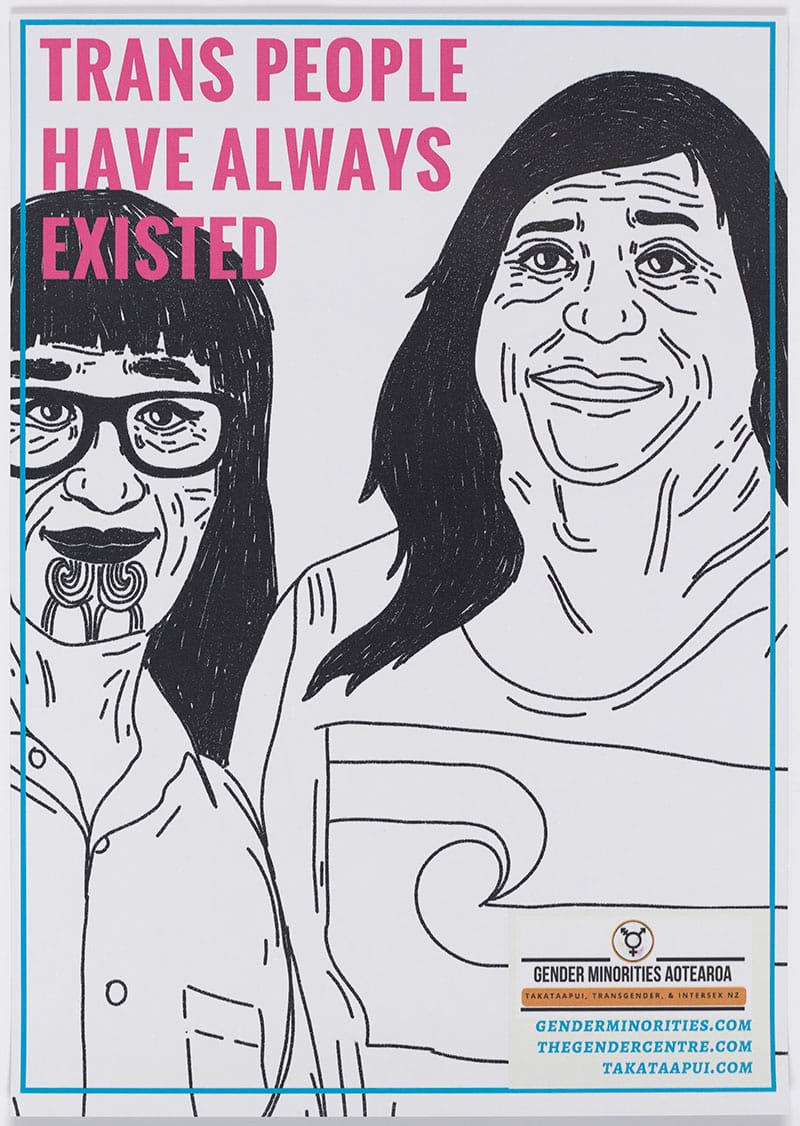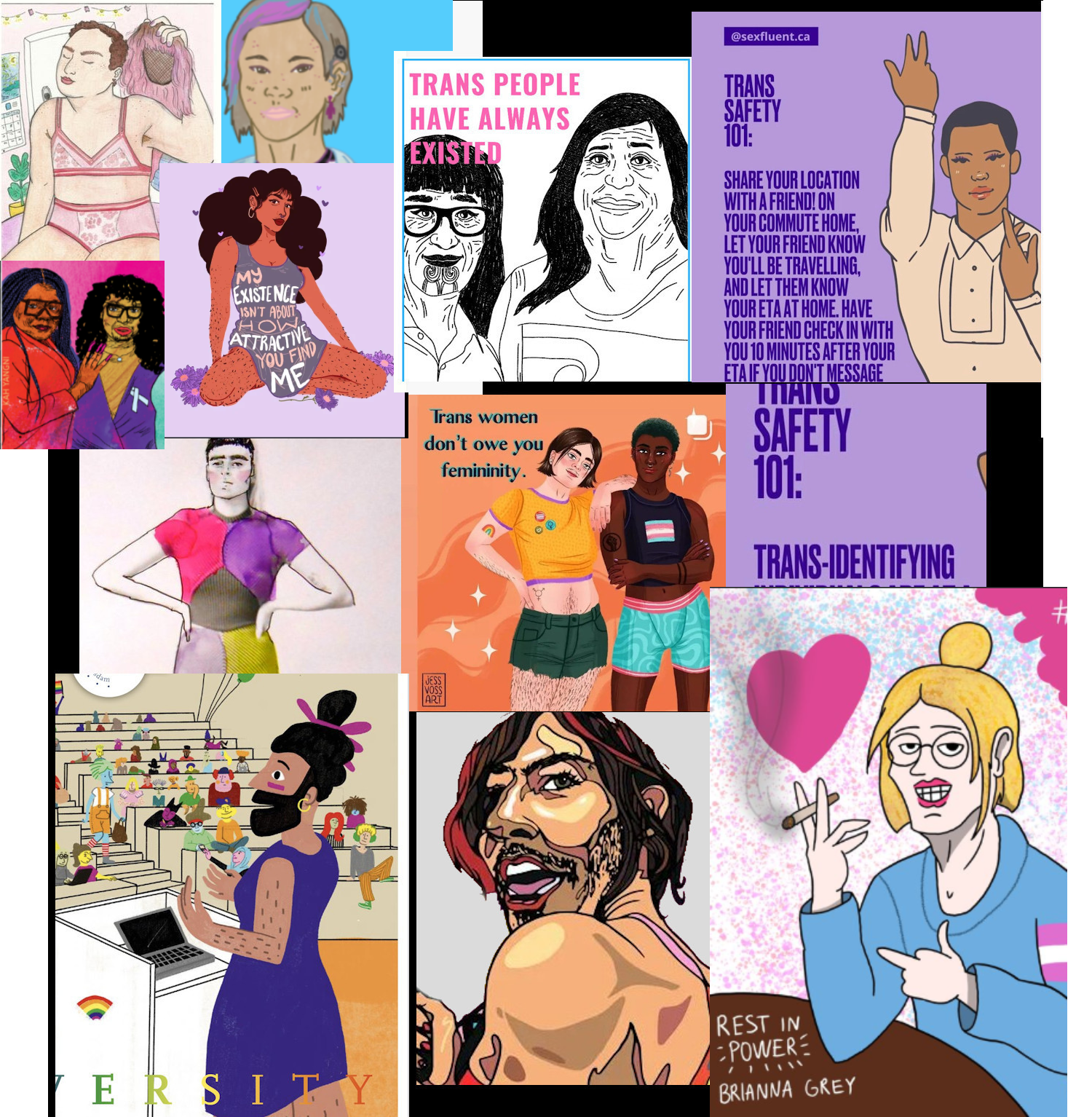The Trans Woman as Grotesque in Transgender Art
Validity is a plague, visibility is a threat, and “woke” caricatures won’t lead to liberation. If you want to fight for the dignity of trans women, you have to actually portray us as women.

Making masculinity the default trans image does direct harm to transsexuals broadly, not just transsexual women.
Why do images of trans women that come from trans movement organizations often play into the same stereotypes about us being mannish, grotesque, monsters that the worst transphobes you’ll find in the depths of the internet do?
“The queer community has endlessly promoted masculinity/butchness/non-transition/body hair/non-passing as the prime ideals of woke trans representation.” Anna Leigh (cited with permission)
This is a problem because it contradicts the central supportive message we give to trans women: It is okay to be a woman.
This disconnect is a result of using transgender as an umbrella term without understanding the differences between different kinds of trans people.
For non-transitioning transgender people, validity may be enough. For transsexuals, validity is a trap.
"I am, frankly, thoroughly over validity.
Trans people who do not transition bodily are exceedingly valid to a society that abhors those who change their sex! Their validity was never in question!
Transsexuals, however, are constantly invalidated and implicated in the very systems that oppress us!" - Talia Bhatt
The problem is that transgender as a label seems to only unite non-transitioning trans people and caricatures of transsexual women.
This is not to say that “transgender” is problematic in and of itself.
However, when the term transgender is used to promote masculinity, and only masculinity- it falls short.
It falls short for two main reasons.
- There is a cissexual, non– transition bias of the broad transgender community that makes trans women roughly equal to "AMAB" and both roughly equal to beard/masculinity.
- There is a pro masculinity bias in queer and feminist academia and media. My Master's level gender studies textbook reflects this, it says we need to consider men's grievances to do feminist work.
Mainstream gender activism seems to have convinced itself that promoting transition is regressive.
Instead, it promotes ideas that the more you transition, the less enlightened you are.
And the means of this promotion are images that feel like Kiwi Farms-esque caricatures.
Kiwi Farms (KF) is, of course, the notorious mass doxxing and harassment website known for targeting trans people, especially transsexual women, with hate, harassment, SWATing, and other tactics meant to silence and kill us.
Transsexuals aren’t KF’s only targets. We’re just their favored targets.
The site has been blocked in New Zealand for being the depository of the manifesto of the Christchurch shooter, and for refusing to comply with authorities investigating the far-right mass murderer.
Now, I want you to look at this collage. See if you can tell me which image, or images, came from Kiwi Farms, and which came from trans advocacy or transgender culture.
Editor's Note: The below image has 14 caricatures of trans people, and the rest of this article discusses these and 2 additional caricatures. Brace yourself.

Can you spot the transphobic caricature?
Think about it. Look really hard. What are the shared features, what could indicate what is or isn’t meant to be a tool of dehumanization and harassment?
Ok, now for the grand reveal.
This post is for subscribers (free or paid) only
Subscribe now and have access to all our stories, enjoy exclusive content and stay up to date with constant updates.
Already a member? Sign in
